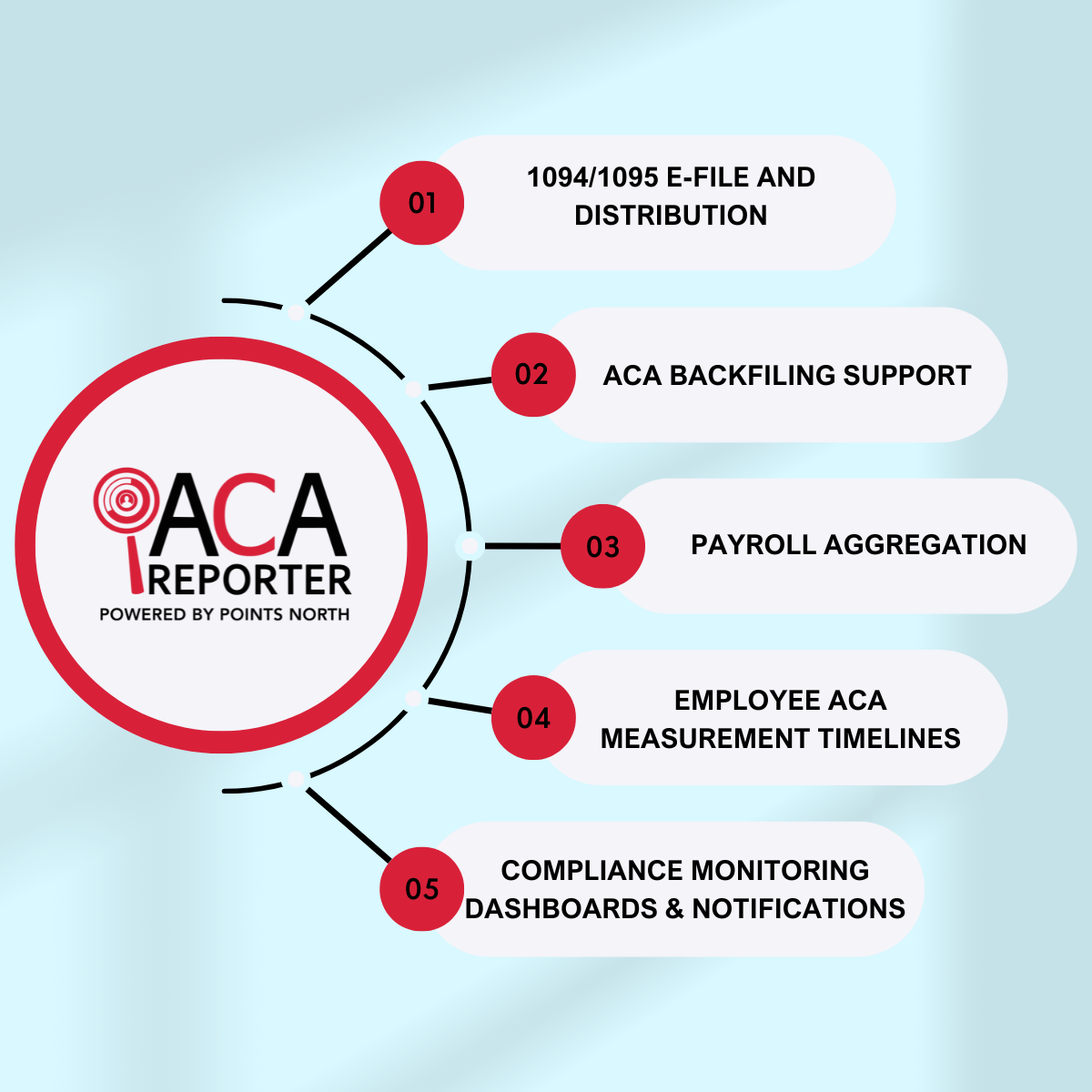
Gathering information and paperwork for filing your company's taxes each year can be stressful. The task became more complex under the 2010 Affordable Care Act. ACA compliance requires accurate and timely reporting.
There's a lot of information to track to remain in compliance. Adding to the stress, federal ACA reporting requirements change each year. Plus, states are adding their own ACA compliance rules. It's enough to challenge any HR leader.
What is ACA reporting? How do you ensure you're in compliance? Here's what you need to know.
What is ACA Reporting?
Under the Affordable Care Act, Applicable Large Employers (ALEs) must offer employees affordable health insurance that provides the required minimum coverage. ALEs are companies with 50 or more full-time (or full-time equivalent) employees.
Is your company an ALE? That depends. Under ACA, any employee who averages 30 hours or more per week is full-time. If 50 or more of your employees do, then your company falls under the ACA's ALE requirements.
Since 2015, all ALEs must file an annual report with the Internal Revenue Service (IRS) verifying their compliance with ACA. Filers use either form 1095-C, "Employer-Provided Health Insurance Offer and Coverage," or 1095-B, if self-insured, along with a 1094-C cover sheet. You also need to share the information with your employees each year using form 1095-A (and 1095-B if self-insured).
Smaller companies (fewer than 50 full-time employees) that offer employee health insurance must also file these annual reports.
ACA Reporting Requirements
Your ACA reporting should prove that your company's health insurance is affordable and meets minimum coverage requirements. That requires compiling detailed data about your health insurance program and each individual eligible employee and filling out form 1095-C for each, plus the duplicate 1095-A and the 1094-C cover form.
On each 1095-C, you will report:
- the employee's name, address, age, and Socia Security number (SSN)
- the company's name, address, and employer identification number (EIN)
- the year for which the information is reported
- the coverage offered to the employee and when it was offered
- which months the employee was eligible for coverage
- the employee's share of the cost of coverage
- proof that the plan meets affordability criteria (calculated using one of three Safe Harbor methods).
You'll use 1095-A forms to share this data with each full-time employee, whether or not they participated in the offered coverage plan.
The 1094-C will accompany the 1095-C forms you'll file with the IRS. It includes:
- information about your company, including address, phone number, employer identification number (EIN)
- the name of your company's contact person
- number of employees you have
- number of your full-time employees
- number of 1095-C forms your report includes
The deadlines vary for each form. The IRS requires all employees eligible for health coverage receive a 1095-A (and 1095-B, if applicable) by January 31st of the following year.
Deadlines for filing 1094-C, 1095-C (and 1095-B) forms vary depending on whether you file on paper or electronically. For paper forms, the annual filing deadline is February 28th. For electronic filing, the deadline is March 31st.
Penalties for ACA Reporting Issues
There are three ways an employer can get into trouble for failing to comply with the Affordable Care Act's reporting requirements. There is no statute of limitations for violations. Noncompliance can carry steep financial penalties
The first issue involves the subject of the reports. An ALE must meet the minimum essential coverage requirement. Failure to do so could bring steep penalties. The 2021 penalty was $225/month or $2,700/year per employee (minus up to 30). So for a company of 250 employees, that would be $2,700 times 220, or $594,000.
The second compliance issue involves failing to show your company offers insurance that meets the ACA's minimum value and affordability standards. Your company could face a steep fine if any full-time employee uses tax credits to buy health insurance through the Health Insurance Marketplace.
In 2021, this penalty was set at $4,060 ($338.34 per month) per affected employee. So, if 10 employees purchased Marketplace coverage using tax credits, the penalty would be $40,600.
The third involves failing to comply with ACA reporting requirements. ALEs and some smaller companies must file complete and accurate forms by the deadlines. That's January 31st for forms issued to employees, February 28th for paper filing with the IRS, and March 31 for electronic filing with the IRS.
Failing to meet filing deadlines can cost you a lot. For failing to provide Form 1095-B or 1095-A to an employee, the penalty runs $270 per return. Failing to file Forms 1095-C or 1095-B on time with the IRS can also cost your company $270 per employee.
Failing to provide accurate information on your 1095 forms can also incur penalties. However, the IRS is cutting company's some slack if they make a good faith effort to comply. But there's no guarantee that will continue.
Getting your reports right and filed on time can save both time and money. An ACA reporting service can help you manage your data and deadlines so that you can be confident in your compliance.
Simplifying ACA Compliance
There is a great deal of paperwork and data you must tract to ensure accurate and timely ACA reporting. You will need to keep up with all personnel changes at your company. That includes service breaks, special leaves, change in status, change in wages, variable-hour positions, employees working in multiple locations, and other information.
You'll need to calculate your employee health coverage as it compares to affordability standards using one of the Safe Harbor methods. You'll also need to keep up with changes to ACA reporting requirements, regulations, and tracking rules.
A reliable ACA reporting solution can help you with all of those challenges. The right ACA reporting service takes the complexity out of the process by tracking all the changes for you.
If your company has more than 250 employees, your ACA reporting must be done electronically. So, you need a solution built for electronic filing.
Reliable ACA Reporting Solution
The leading ACA reporting solution, ACA Reporter, makes compliance quick and painless. This software platform from Points North simplifies tracking and reporting.
ACA Reporter allows you to integrate payroll and enrollment so you can easily create 1095 and 1094 forms. It also supports state-level mandated reporting. And it tracks rules changes, so you don't have to.
ACA Reporter allows you to see where your organization stands so you can create an effective compliance strategy. It lets you track your compliance with ACA reporting requirements and take action when necessary.
Learn more about ACA Reporter and book your free demo today!






.png)